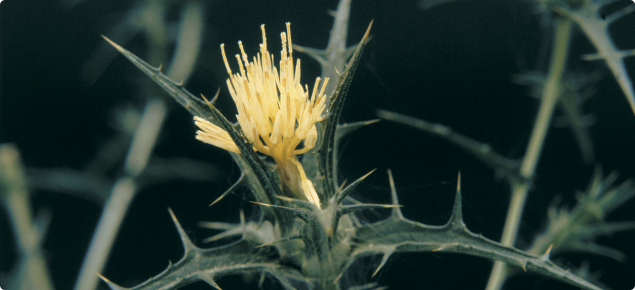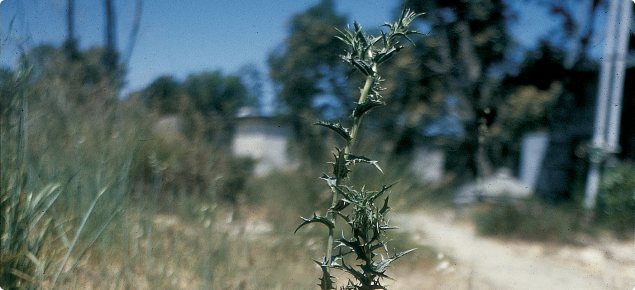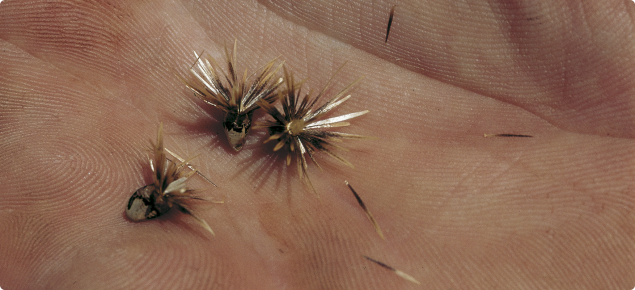Form: herbaceous — annual
Status: present in WA
Appearance
Saffron thistle is an erect annual thistle to one metre (rarely to 1.5 metres) high, native from southern Europe and the Mediterranean to central Asia. It is now widespread in parts of the cereal growing pastoral areas (Goldfields) in WA.
Stems: Stiff, ribbed, branched above, hairless to downy. Stems round in cross-section.
Leaves: Variable; basal leaves in a rosette, lanceolate, initially with few lobes but older leaves more dissected, to 20 centimetres long and to five centimetres wide; stem leaves to 11 centimetres long and to five centimetres wide, usually hairless but some plants with hairy leaves, base stem-clasping and not on a leaf stalk. Mature leaves are stiff.
Flowers: In solitary heads to two centimetres wide, surrounded by stiff spiny bracts (involucral bracts) to five centimetres long. Heads made up of small flowers (florets) to three centimetres long. All florets are tubular and yellow. Flowers late spring to autumn.
Seeds: Seeds ovoid, grey-brown, four to six millimetres long, about three millimetres wide, hairless, four-angled, apex with linear scales to one centimetre long.
Agriculture and economic impact
Saffron thistle is a hardy weed of cultivation that displaces more useful species in poor pasture and is arguably the most widespread thistle in Australia. It is only considered an important weed in Australia. The spines contaminate wool, and make handling contaminated sheep painful. It is seldom eaten, but its seeds are oil and protein rich. The plant matures with cereal crops and seed is harvested with the grain, and this is one of the main methods of spread. Dry seeds tangle in wool.
Wheat contaminated with saffron thistle seed is liable to dockage.
Legal status
The Western Australian Organism List (WAOL) contains information on the legal status of this pest in Western Australia (WA). Search for saffron thistle in WAOL using the scientific name Carthamus lanatus.
Search > detect > report
| MyPestGuide™ Reporter | Pest and Disease Information Service (PaDIS) |
Control method
When using any agricultural chemicals please ensure that you always follow instructions on the label and any permit. Users of agricultural chemical products must always strictly comply with the directions on the label and the conditions of any permit.
Only registered products can be used for weed and pest control.
Control methods for this pest can be found through the APVMA website, use "saffron thistle" as the pest name.
Further information
Further information on saffron thistle can be found on the saffron thistle: what you should know page.




